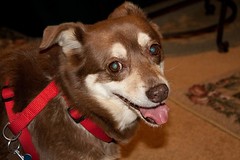Drivers and Pedestrians Share Responsibility for Safe Roadways

Pedestrians cross road in Mong Kok (Photo credit: Wikipedia)
At least one Hunterdon County town is taking a stronger stand against motorists who fail to yield to pedestrians, and this action is bringing to light the responsibilities not only of drivers but of pedestrians as well. (1) If you have been involved in a pedestrian traffic accident, contact the Hunterdon County personal injury attorneys at Ragland Law Firm.
Recently it was reported that police in the Borough of Flemington would be taking a harder look at drivers who fail to yield to pedestrians in an effort to make the Borough’s streets safer, especially for children walking to and from school. Initially police would issue warnings to remind drivers of the State law and the consequences for ignoring that law. The warnings would be followed by tickets. (1) Similar actions are being taken further south in Atlantic Highlands, NJ where police recently acquired a grant from the New Jersey Division of Highway Traffic Safety to be used for the education and enforcement of pedestrian safety measures. (2)
 New Jersey Injury Lawyers Blog
New Jersey Injury Lawyers Blog








